Dynaudio Focus 380 is a three-way floorstanding loudspeaker offering detail in abundance. It has two 200mm woofers, a dedicated 150mm midrange driver, and a 28mm soft dome tweeter. The loudspeaker is designed to deliver large-scale audio images and a sizeable bang for the buck. It employs first-order crossovers to marry its driver complement and features oxygen-free copper air-coils, selected capacitors, and ceramic resistors. The enclosures are braced in critical sections and internally damped to minimize unwanted resonances.
Dynaudio Focus 380 is a three-way floorstanding loudspeaker offering detail in abundance. It has two 200mm woofers, a dedicated 150mm midrange driver, and a 28mm soft dome tweeter. The loudspeaker is designed to deliver large-scale audio images and a sizeable bang for the buck. It employs first-order crossovers to marry its driver complement and features oxygen-free copper air-coils, selected capacitors, and ceramic resistors. The enclosures are braced in critical sections and internally damped to minimize unwanted resonances.



-
 1
1
-
 2
2
-
 3
3
Dynaudio Focus 380 is a three-way floorstanding loudspeaker offering detail in abundance. It has two 200mm woofers, a dedicated 150mm midrange driver, and a 28mm soft dome tweeter. The loudspeaker is designed to deliver large-scale audio images and a sizeable bang for the buck. It employs first-order crossovers to marry its driver complement and features oxygen-free copper air-coils, selected capacitors, and ceramic resistors. The enclosures are braced in critical sections and internally damped to minimize unwanted resonances.
Ask a question and I''ll find the answer in the document
Finding information in a document is now easier with AI
Related papers
-
Dynaudio Loudspeakers Owner's manual
-
Dynaudio Loudspeakers Owner's manual
-
Dynaudio Stand4 Assembly Instructions
-
Dynaudio Evidence Temptation Owner's manual
-
Dynaudio Evidence Temptation User manual
-
Dynaudio Esotec MW 162 Owner's manual
-
Dynaudio ESOTEC Car Stereo System User manual
-
Dynaudio Esotec MW 162 User manual
-
Dynaudio DA-BM15A User manual
-
Dynaudio DBM50 User manual
Other documents
-
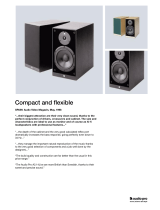 Audio Pro A2.14 Live Quick start guide
Audio Pro A2.14 Live Quick start guide
-
Cambridge Audio 1979 Datasheet
-
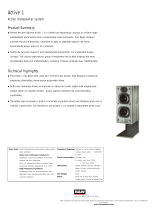 Bowers & Wilkins Active1 User manual
Bowers & Wilkins Active1 User manual
-
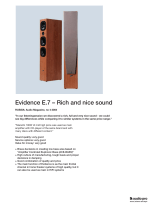 Audio Pro Evidence E.7 Features
Audio Pro Evidence E.7 Features
-
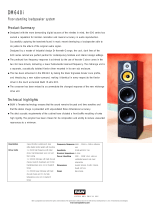 Bowers & Wilkins DM640i User manual
Bowers & Wilkins DM640i User manual
-
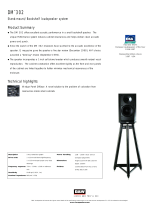 Bowers & Wilkins DM302 User manual
Bowers & Wilkins DM302 User manual
-
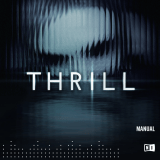 Native Instruments THRILL Owner's manual
Native Instruments THRILL Owner's manual
-
Parasound PAL-380 User manual
-
Bazooka PR-PSM User manual
-
 DALI Loudspeakers AW 10 User manual
DALI Loudspeakers AW 10 User manual









